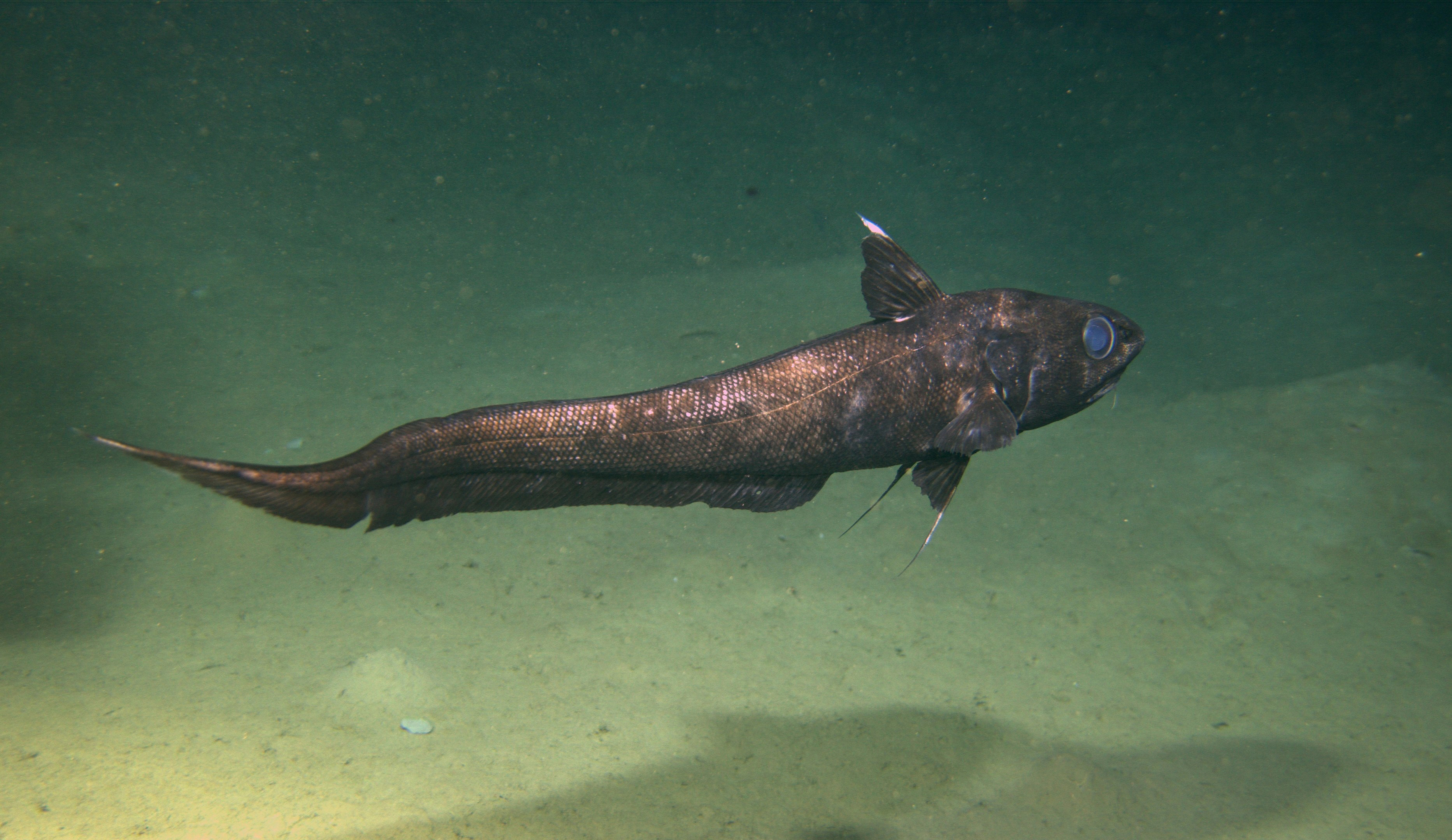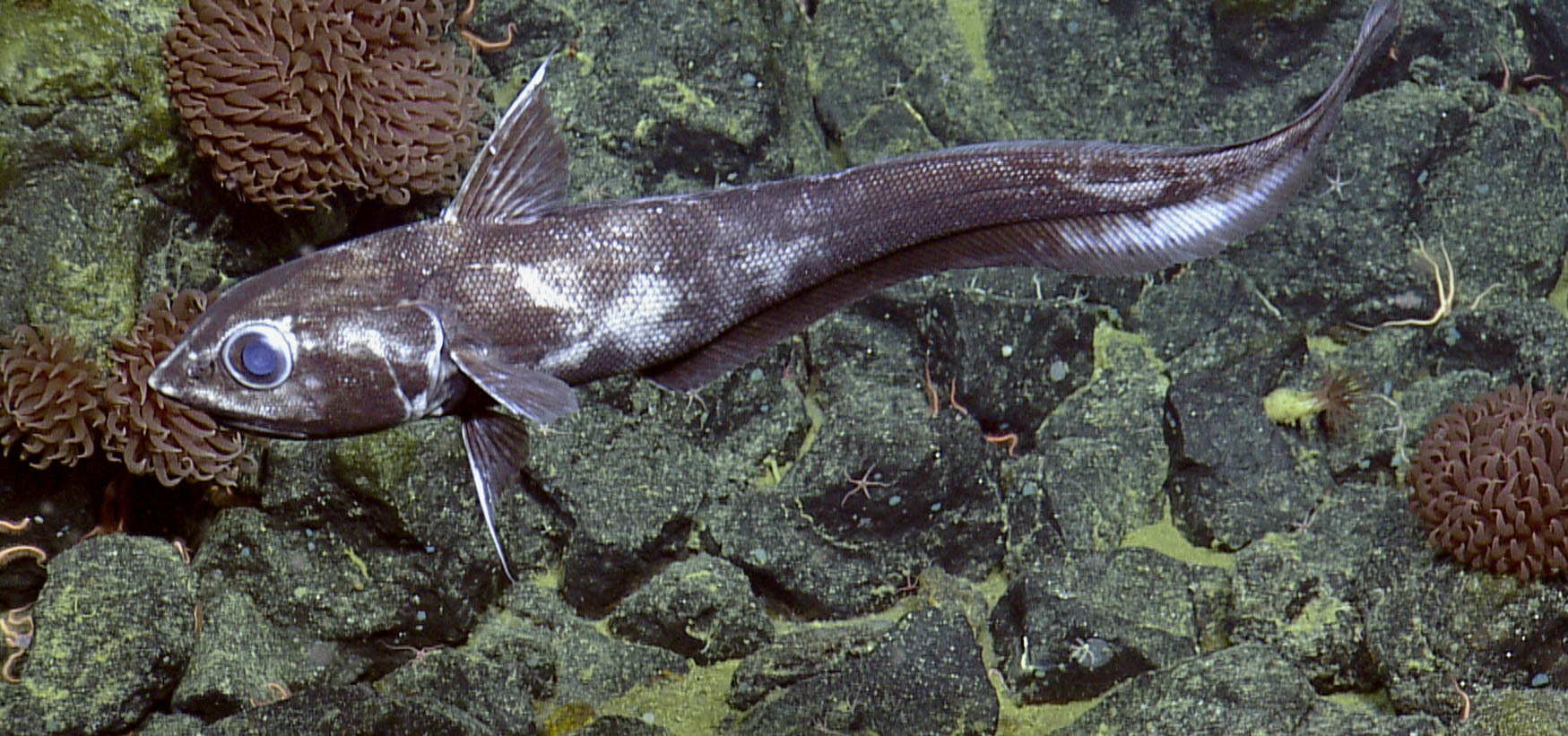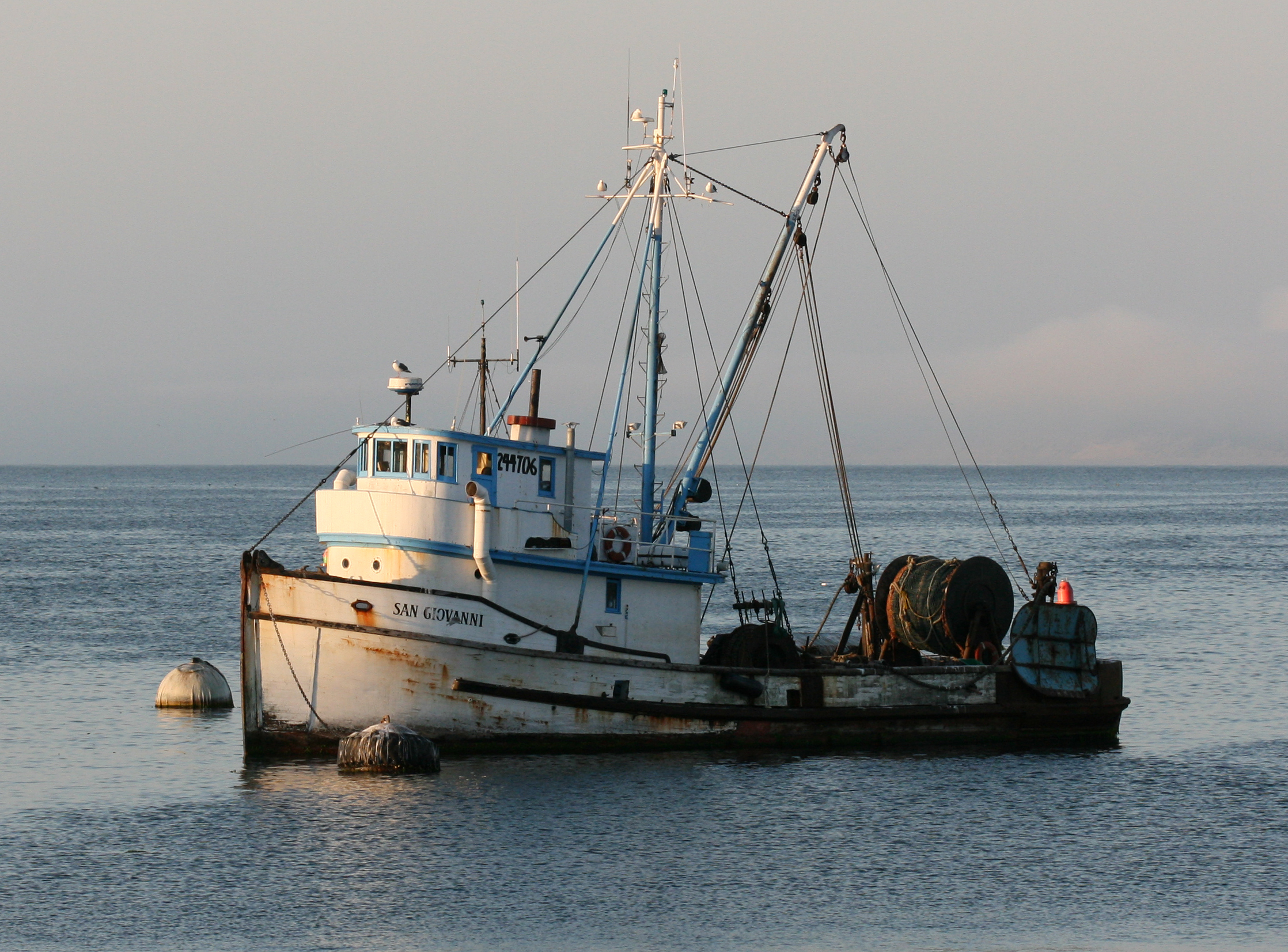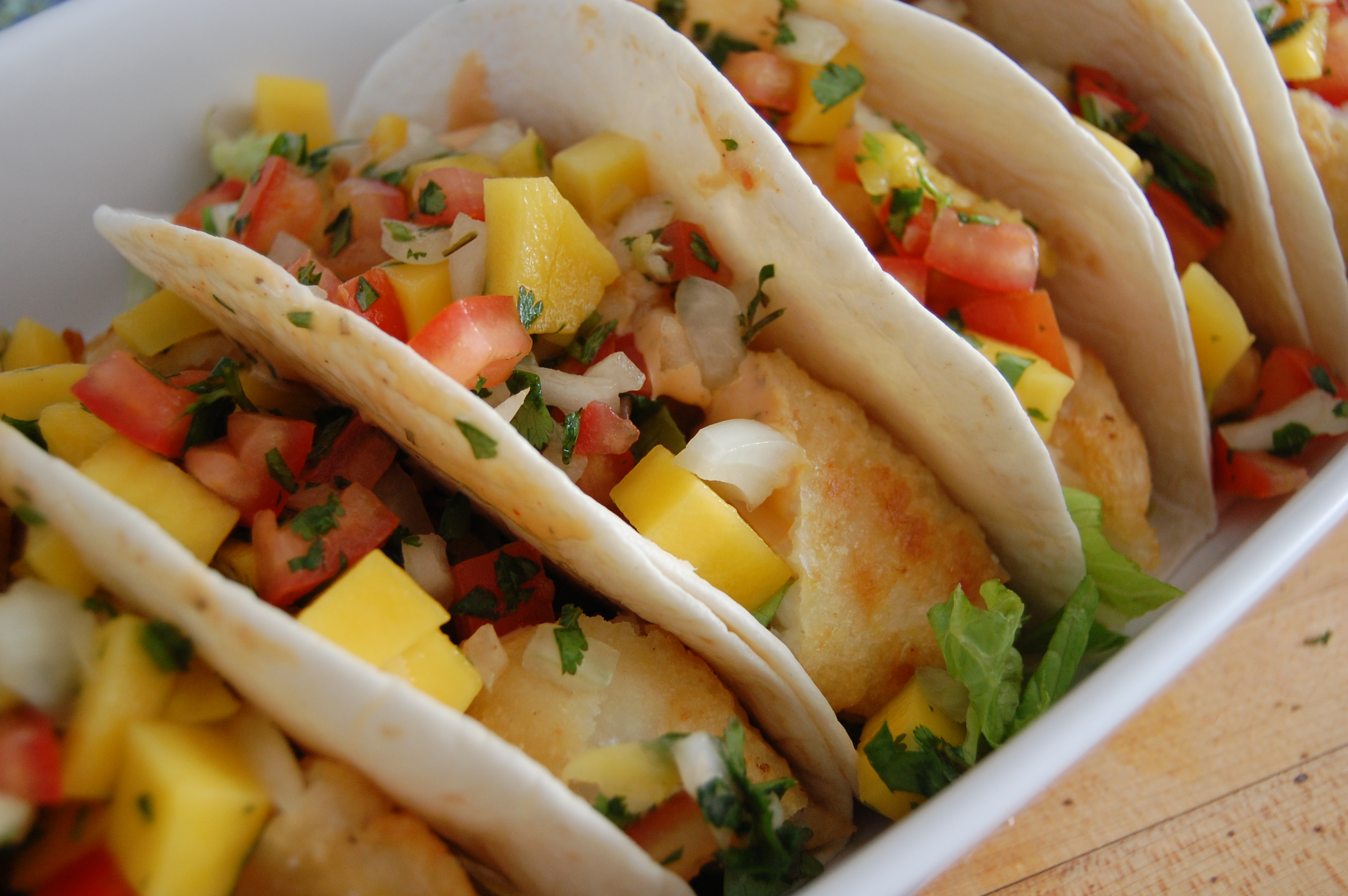Coryphaenoides acrolepis
North Coast (Oregon Border to Point Arena)
North Central Coast (South of Point Arena to Half Moon Bay)
Central Coast (South of Half Moon Bay to Point Conception)
Santa Barbara (Point Conception to Point Dume)
South Coast (Point Dume to Mexico border)
Firm fish
Flakey fish
Wild caught

The Science

Taxonomic description
- Has a large head and eyes with a long body that tapers to a point. It averages 46-65 cm (18-26 inches) in length and has a small chin barbel. It has a short, pointed snout. [1]
- Gray to grayish brown when young, and turns a dark brown color in adulthood. [1]
- Has a large gas bladder that expands and is usually everted when hauled to the surface. [19]
Distribution
- Found in deep waters ranging 300-3,700m deep off coasts all along the North Pacific, from northern Japan to the Bering seas and as far south as northern Mexico. [1]
Life history
- Far-ranging scavenger that typically feeds on decaying material and other benthic organisms like small fish, krill, prawns, amphipods, and cephalopods. [1,2]
- Spawning occurs throughout the year, but in coasts off southern California spawning peaks between late winter and early summer. Further north off Point Conception, heaviest spawning may occur earlier. [19]
- The Pacific Grenadier expends energy very slowly and takes a long time to grow and reproduce. [4]
Habitat
- Spends its life on the sea floor, scavenging for food. Grenadier have even been observed in extreme low-oxygen environments that would be deadly for other fishes! [1,5]
- Capable of traveling long distances while scavenging. One was even found far away from its typical range in the South Atlantic! [2,6]
The Fishery

Seasonal availability
- Seasonal availability for recreational fishing depends on the regional management authority. Refer to your local management area's rules to see when fishing for Pacific Grenadier is allowed. [7]
- Landed commercially throughout the year, but landings tend to decrease during July to September. [20]
Regulatory and managing authority
- Managed federally by the NOAA fisheries and, as established by the Magnuson-Stevens Act, the Pacific Fishery Management Council (PFMC) through the Pacific Coast Groundfish Fishery Management Plan (FMP), where it is listed as an Ecosystem Component Species. [21]
- As established by the Marine Life Management Act, the California Fish and Game Commission (CFGC) regulates the fishery in state waters, and the California Department of Fish and Wildlife (CDFW) manages this fishery. [22,23]
- The California Groundfish Collective combines input from the industry and government entities to inform regulatory and management measures for this fishery. [24]
Gear type
- Most grenadier is caught by groundfish fisheries, especially in trawl and non-sablefish endorsed longline fisheries. [8]
- A variety of gear is used including bottom trawl, longline, pot, and hook and line, but trawl is the most common. [8]
Status of fishery
- Usually caught as bycatch by fisheries targeting other species, and is typically discarded. Most Pacific Grenadier is consumed domestically. [8]
- Considered a 'Good Alternative' by Seafood Watch. [8]
- Although stocks have not been fully assessed, fishing mortality is very low relative to overfishing limits. [8]
Potential ecosystem impacts
- The use of bottom-tending gear like trawls has the potential to seriously damage seafloor habitat. [8]
- There is concern that this species is vulnerable to overfishing due to its low fecundity and slow growth. [4]
The Seafood

Edible portions
- Typically only the filet is consumed. [9]
Description of meat
- Filets are light pink when raw. When cooked, it turns white, has a mild and slightly sweet taste and a firm, flaky texture. [9,19]
Culinary uses
- Grenadier can be fried, baked, roasted or broiled. [9]
- In Japan, this fish is sometimes used for surimi, which is used to make imitation crab sticks and other fish cake products. [10]
- For a Chinese fish paste recipe using white fish, visit Red Cook. [11]
- For a recipe for grenadier with olive and leeks, visit Cooking with Amy. [25]
Nutritional information
-
Nutritional informaton provided is based on information for blue grenadier, a similar fish. [12]
Toxicity report
-
There is some concern about mercury levels in grenadier as a deep-sea fish, but more studies are needed to understand the impact of mercury in this fish. [13,14]
Seasonal availability
- Available year-round in California. [9]
References
[1] Luna, S.M & Orlov, A. FishBase. n.d. Coryphaenoides acrolepis. Web. https://www.fishbase.in/summary/CORYPHAENOIDES-ACROLEPIS.html. Accessed 3 July 2020.
[2] Priede, I.G., Smith Jr, K.L., Armstrong, J.D. 1990. Foraging behavior of abyssal grenadier fish: inferences from acoustic tagging and tracking in the North Pacific Ocean. Deep Sea Research Part A. Oceanographic Research Papers, 37(1). pp.81-101. https://doi.org/10.1016/0198-0149(90)90030-Y
[3] Andrews, A. H., Cailliet, G. M., & Coale, K. H. 1999. Age and growth of the Pacific grenadier (Coryphaenoides acrolepis) with age estimate validation using an improved radiometric ageing technique. Canadian Journal of Fisheries and Aquatic Sciences, 56, 1339–1350.https://doi.org/10.1139/f99-054
[4] Watling, L., Bezaury, J., Devine, J. A., Cailliet, G., Orlov, A. M., Drazen, J., & Durán Muñoz, P. 2012. Evaluation of potential sustainability of deep-sea fisheries for grenadiers (Macrouridae). Journal of Ichthyology, 52(10), 709–721. https://doi.org/10.1134/s0032945212100062
[5] Barry, J. Monterey Bay Aquarium Research Institute. 2019. Biologists discover deep-sea fish living where there is virtually no oxygen. Web. https://www.mbari.org/low-oxygen-fish/. Accessed 3 July 2020.
[6] Laptikhovsky, V., Gaither, M.R., Black, A. 2013. A Pacific grenadier Coryphaenoides acrolepis in the south-west Atlantic and environmental changes in the Falkland deep seas. Cambridge University Press, Marine Biodiversity Records Vol. 6. https://doi.org/10.1017/S1755267213001061
[7] California Department of Fish and Wildlife. 2020. California Recreational Ocean Fishing Regulations. Web. https://wildlife.ca.gov/Fishing/Ocean/Regulations/Sport-Fishing/General-.... Accessed 3 July 2020.
[8] Driscoll, J. Monterey Bay Aquarium Seafood Watch. 2014. Big skate, California skate, Giant grenadier, Longnose skate, Pacific cod, Pacific grenadier. Web. https://seafood.ocean.org/wp-content/uploads/2016/10/Skate-Pacific-Cod-G.... Accessed 3 July 2020.
[9] Santa Monica Seafood. n.d. Grenadier. Web. https://santamonicaseafood.com/seafood/grenadier. Accessed 3 July 2020.
[10] Yamada, K. Matsumiya, M., Fukushima, H. 2020. Modori reaction in blue grenadier and Alaska pollock frozen surimi and myosin degradation behavior upon addition of protease inhibitors. CyTA-Journal of Food, 18(1). pp.451-460. https://doi.org/10.1080/19476337.2020.1774663
[11] Kho, K.L. 2009. Red Cook. Making Fish Paste at Home. Web. https://redcook.net/2009/02/01/making-fish-paste/. Accessed 3 July 2020.
[12] FishChoice. 2020. New Zeland Hoki. Web. https://fishchoice.com/buying-guide/new-zealand-hoki. Accessed 6 July 2020.
[13] Moran, H., Yancey, P. 2012. Analysis of Mercury in Deep-Sea Grenadier. Web. https://people.whitman.edu/~yancey/Moran.Thesis.WhitmanCollege.2012.pdf. Accessed 6 July 2020.
[14] Blum, J. D. et al. 2013. Methylmercury production below the mixed layer in the North Pacific Ocean. Nature Geosience 6. pp.879-884. https://doi.org/10.1038/ngeo1918
[15] Walker, K. 2019. Something fishy...NOAA. Digital image. Web. https://oceanexplorer.noaa.gov/explorations/19gulfofalaska/logs/july24/j.... Accessed 6 July 2020.
[16] Du Preez, C. iNaturalist. 2018. Digital image. Web. https://www.inaturalist.org/photos/21538985. Accessed 22 February 2021.
[17] Bouchard, P. flickr. 2009. Fishing Boat. Digital image. Web. https://www.flickr.com/photos/pbouchard/16701351688. Accessed 22 February 2021.
[18] jpellgen. flickr. 2010. Fish Tacos with Mango Salsa. Digital image. Web. https://flickr.com/photos/jpellgen/4408941853. Accessed 22 February 2021.
[19] Matsui, T., Kato, S., Smith, S.E. 1990. Biology and Potential Use of Pacific Grenadier, Coryphaenoides acrolepis, off California. Marine Fisheries Review 52(3). Web. https://pdfs.semanticscholar.org/8a5f/977b6ce7da4f8d68caa4fef092a9fc411b.... Accessed 17 July 2020.
[20] California Department of Fish and Wildlife. 2020. Table 8 - Monthly Landings in Pounds into California During 2019. Web. https://nrm.dfg.ca.gov/FileHandler.ashx?DocumentID=178010&inline. Accessed 17 July 2020.
[21] Pacific Fishery Management Council. 2019. Pacific Coast Groundfish Fishery Management Plan. Web. https://www.pcouncil.org/documents/2016/08/pacific-coast-groundfish-fish.... Accessed 17 July 2020.
[22] Marine Life Management Act. n.d. California Department of Fish and Wildlife. Web. https://wildlife.ca.gov/Conservation/Marine/MLMA. Accessed 24 August 2020.
[23] New and Proposed Regulations-2019. 2019. California Fish and Game Commission. Web. https://fgc.ca.gov/Regulations/2019-New-and-Proposed#180_6. Accessed 24 August 2020.
[24] The Nature Conservancy. 2015. The California Groundfish Collective. Web. http://www.cagroundfish.org/#our-story. Accessed 2 December 2020.
[25] Sherman, A. Cooking with Amy. 2017. Fish with Olives and Leeks Recipe. Web. https://cookingwithamy.blogspot.com/2017/06/fish-with-olives-and-leeks-r.... Accessed 19 January 2021.
